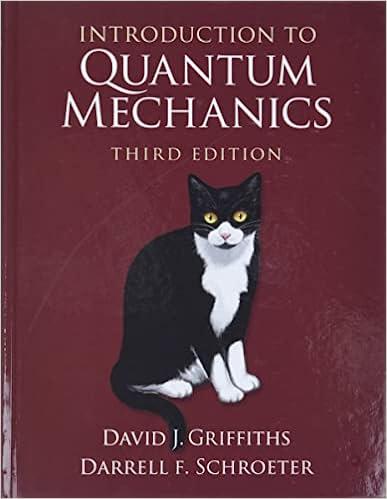In this problem you will develop an alternative approach to degenerate perturbation theory. Consider an unperturbed Hamiltonian
Question:
In this problem you will develop an alternative approach to degenerate perturbation theory. Consider an unperturbed Hamiltonian H0 with two degenerate states Ψ0a and Ψ0b (energy E0), and a perturbation H'. Define the operator that projects onto the degenerate subspace:
![]()
The Hamiltonian can be written
![]()
where
![]()
The idea is to treat H̅0 as the “unperturbed” Hamiltonian and H̅' as the perturbation; as you’ll soon discover, H̅0 is nondegenerate, so we can use ordinary nondegenerate perturbation theory.
(a) First we need to find the eigenstates of H̅0.
i. Show that any eigenstate Ψ0n (other than Ψ0a or Ψ0b) of H0 is also an eigenstate of H̅0 with the same eigenvalue.
ii. Show that the “good” states Ψ0 = aΨ0a + β Ψ0b (with α and β determined by solving Equation 7.30) are eigenstates of H̅0 with energies E0 + E1+.
(b) Assuming that E1+ and E1- are distinct, you now have a nondegenerate unperturbed Hamiltonian H̅0 and you can do nondegenerate perturbation theory using the perturbation H̅. Find an expression for the energy to second order for the states Ψ0± in (ii).
Comment: One advantage of this approach is that it also handles the case where the unperturbed energies are not exactly equal, but very close: E0a ≈ E0b. In this case one must still use degenerate perturbation theory; an important example of this occurs in the nearly-free electron approximation for calculating band structure.

Step by Step Answer:

Introduction To Quantum Mechanics
ISBN: 9781107189638
3rd Edition
Authors: David J. Griffiths, Darrell F. Schroeter





